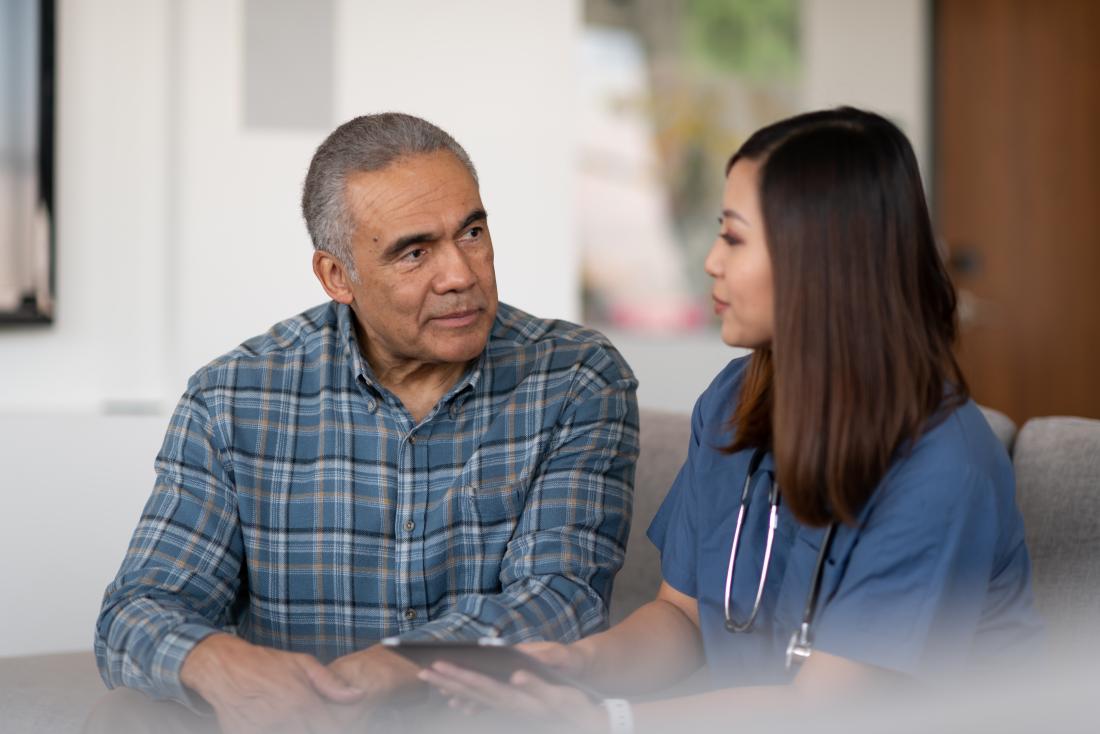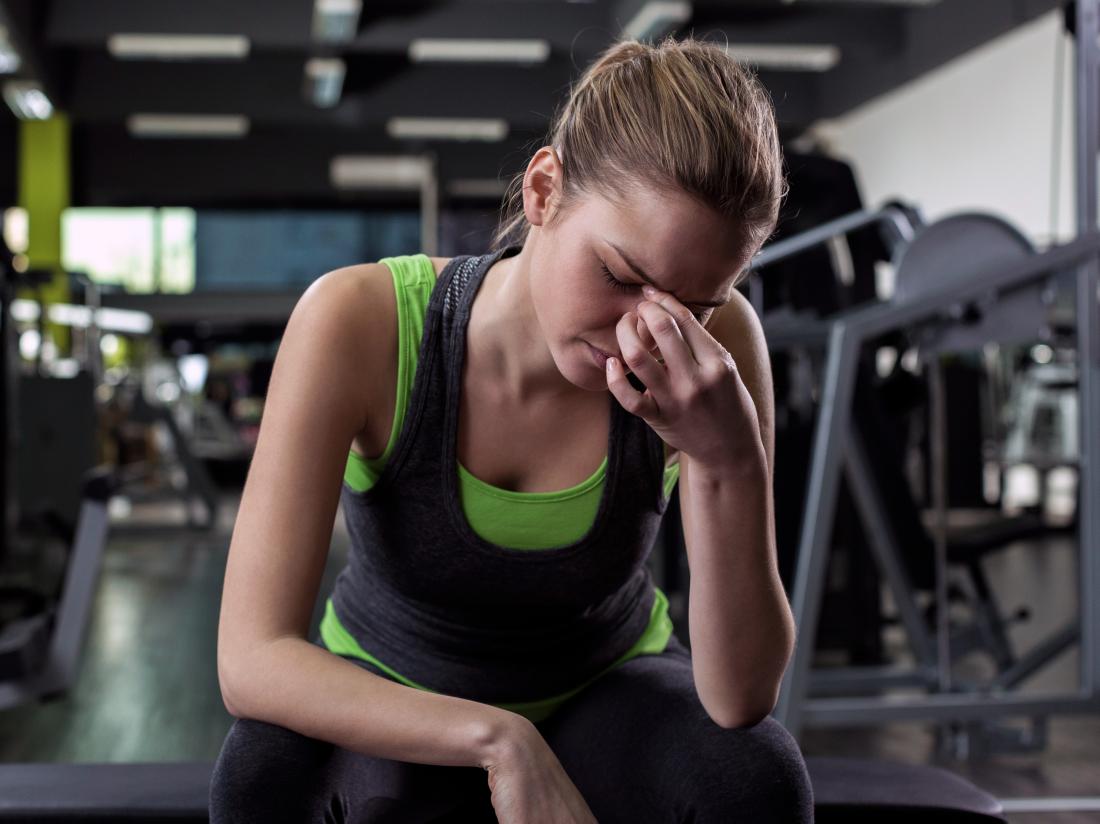In some cases, an underlying condition could be causing a headache after exercising. In this article, we look at possible causes of a headache after exercise, treatment options, and when to see a doctor.
Causes
Exertional headache
A person with an exertional headache may experience a pulsating sensation.
A primary exertional headache is a headache that people get solely from exercising and has no underlying causes.
Symptoms of primary exertional headache include:
- pain, usually on both sides of the head
- a pulsating sensation
The pain can last between 5 minutes to 48 hours and may feel similar to a migraine.
People may be more likely to get a primary exertional headache after exercising in hot conditions or at a high altitude.
A secondary exertional headache occurs because of an underlying condition, such as:
- heart disease
- stroke, or bleeding in the brain
- a tear in an artery
- reversible cerebral vasoconstriction syndrome, which is a narrowing of the blood vessels
- a brain tumor or lesion
Dehydration headache
If people do not replace fluids during or after exercise, they may become dehydrated. Water and electrolytes keep the body hydrated, and people lose both of these through sweating.
When a person is dehydrated, they may develop a headache.
Other symptoms that may indicate dehydration include:
- feeling thirsty
- feeling lethargic or fatigued
- dark yellow urine
- producing less urine than usual
- dry mouth or lips
- feeling irritable
- dizziness
Learn more about dehydration headaches.
Tension headache
A tension headache is the most common type of headache. Muscle tension from exercising or incorrect posture during exercise can cause these headaches. People who experience stress may also develop tension headaches.
Symptoms of a tension headache include:
- mild to moderate pain
- a gradual start to the headache
- pain in the neck and back of the head
- pain that can be either a dull ache or a vice-like band around the head
- pain that often affects both sides of the head
- usually constant pain rather than throbbing
Learn more about tension headaches.
Exercising in heat
Exercising in a hot climate or direct sunlight can trigger a headache and migraine. Increased heat levels can cause excess sweating, which can lead to dehydration.
Bright sunlight may also act as a trigger for headaches and migraines.
Low blood sugar
If people do not eat before exercising, they may develop a headache due to low blood sugar levels. Exercise burns calories, and if people do not take in enough calories before exercising, their blood sugar levels can drop.
When people eat carbohydrates, the body converts them into glucose. The brain, in particular, relies on a constant supply of glucose to function properly. If the brain does not get enough glucose, it can cause a variety of symptoms, including headaches.
Other symptoms of low blood sugar levels can include:
- nausea
- confusion
- sweating
- feeling faint or dizzy
- shaking
- hunger
Migraine
According to The Migraine Trust, moderate, regular exercise may help prevent migraines and reduce the severity of symptoms.
However, exercise may be a trigger for migraines in some people. Some of the most common symptoms of migraine include:
- throbbing head pain
- increased sensitivity to light and sound
- nausea
- vomiting
- fatigue
If exercise does trigger a migraine, there may be underlying reasons, such as:
- starting exercise abruptly, so the body requires a sudden increase in oxygen
- low blood sugar
- dehydration
- lifestyle changes, such as diet
Treatment

Staying hydrated may help treat a headache after exercise.
If people have a headache due to fluid loss through exercise, they should rehydrate by drinking water. They may also wish to try the following:
- Increasing fluid intake throughout the day: Eating fruits, vegetables, smoothies, and soups is an excellent way of increasing fluids.
- Replacing electrolytes: This can also help the body to rehydrate. People can take oral rehydration solutions, which provide electrolytes to help replace those lost through sweating.
- Stretching: Gentle exercise, such as yoga, may help to relieve muscle tension and a related headache.
- Relaxation techniques: Meditation, for example, may help to release tension from the body.
- Soaking in a warm bath: This may help to relax muscles, in particular, those around the head.
- Applying a heat pad to the neck and shoulders: This may also help to relax muscles around the head.
- Over-the-counter pain relief medication: These may also help to relieve painful symptoms.
If a drop in blood sugar levels during exercise is causing the headache, eating a snack or small meal after exercising may help the sugar levels return to normal and treat the headache.
Prevention
If people are experiencing headaches after exercising with no underlying condition, then the following steps may help prevent a headache from developing:
- hydrating with water before, during, and after exercise
- rehydrating with electrolyte drinks or oral solutions
- warming up and cooling down thoroughly before and after exercise
- checking form and posture is correct when exercising
- wearing footwear that supports proper posture
- avoiding skipping meals, particularly breakfast
- eating small, regular meals to help manage blood sugar levels
- making sure to get enough sleep each night
- waking up and going to sleep at the same times each day
- exercising moderately each day, for a minimum of 30 minutes
- avoiding exercising in extreme heat for long periods
When to see a doctor

If a person with a history of heart problems experiences a headache after exercise, they should talk to their doctor.
Anyone who is experiencing exercise headaches but is not aware of any underlying conditions should see their doctor for evaluation.
People who have any existing conditions relating to the heart or risk factors for heart disease should talk to their doctor about exercise-related headaches, especially if they have neck or jaw pain alongside a headache.
This includes people who have a history of:
A doctor may carry out various tests to rule out any underlying conditions that may cause headaches after exercising.
Tests may include:
People who develop new headaches after the age of 40, experience headaches that last more than a few hours, or experience other neurological signs, should see a doctor as soon as possible.
Summary
There are many reasons why people get a headache after exercising. Losing fluids while exercising is an easy way to become dehydrated, which can lead to headaches. Drinking plenty of water or electrolyte solutions can help prevent this.
A particularly strenuous workout or infrequent exercise, can create stiffness and aching in the body. This muscle tension can lead to a headache. Stretching properly before and after exercising may help prevent this.
Sometimes, headaches after exercising are due to an underlying condition. Those who experience exercise-induced headaches for no apparent reason or have a cardiovascular condition or other symptoms should see their doctor for a checkup.
